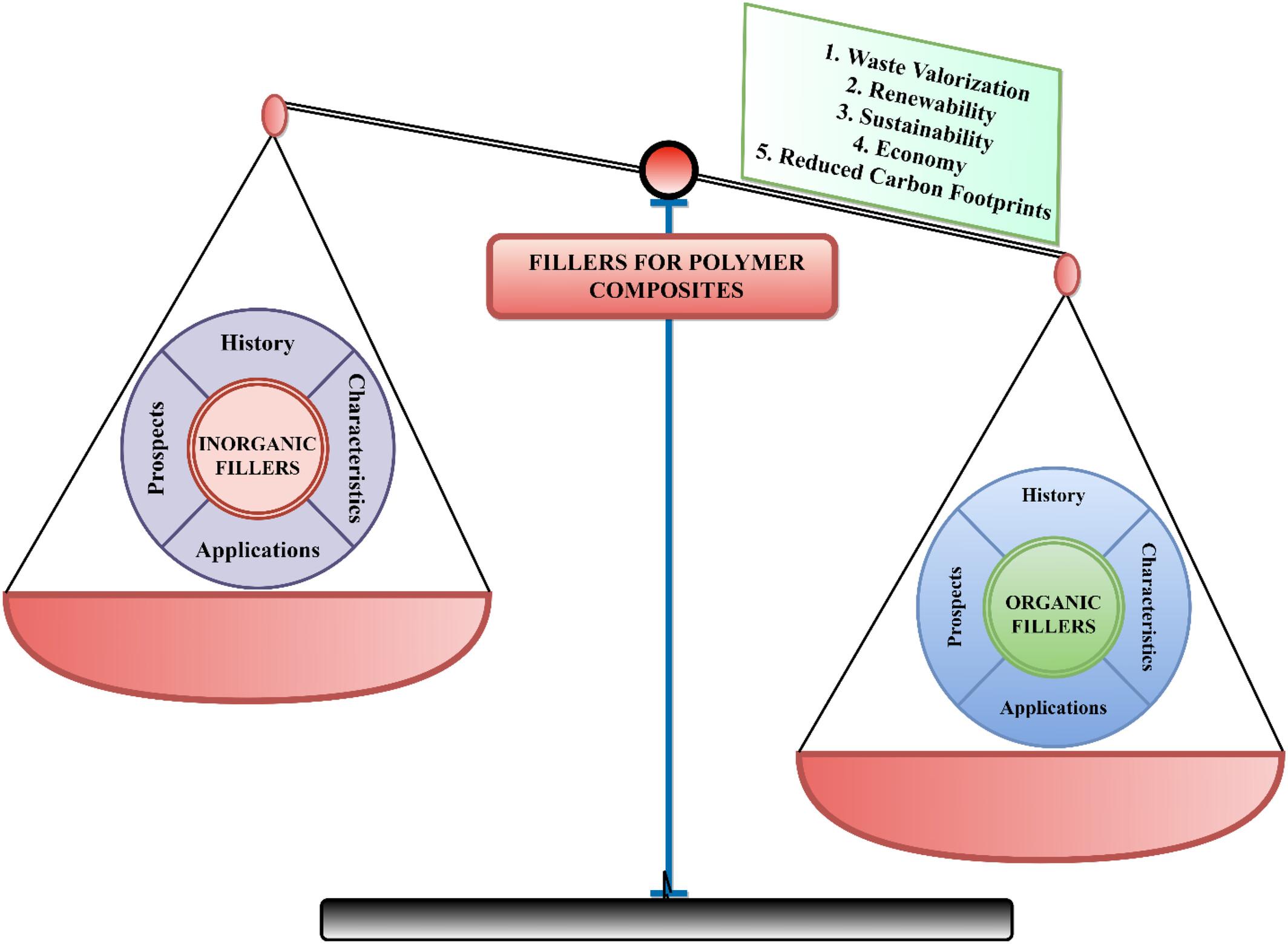The need for new sustainable engineering materials using polymer composites is evolving every day. Researchers are in a race to develop value-added products from natural renewable sources and discarded waste materials. Studies indicate several hurdles while trying to provide ecologically friendly materials for product manufacturing over the years. Natural materials are more readily available, biodegradable, more affordable, have less processing health hazards, and are more environmentally friendly than synthetic materials. As the price of commercial polymers decreased, the incorporation of fillers became increasingly necessary for technical reasons.. The market for polymers can actually be expanded by appropriately combining fillers and polymers to produce a wide range of qualities in these two components. This review provides an overview on a variety of organic and inorganic fillers which were incorporated into the polymer composites and their influence on the physical, chemical, mechanical, thermal, and electrical properties of polymer composites by various characterization methods and their In fact, it is possible to achieve a wide range of qualities in these two components by appropriately combining polymers and fillers, which expands the market for which polymers may be employed.application scopes. This review aims to thoroughly examine and assess various polymer and filler combinations, with a particular emphasis on their potential suitability for a range of engineering and industrial applications. These encompass microelectronics, biomedical fields, flexible electronics, flame retardant uses, food packaging, automotive and aerospace sectors, as well as applications within the construction industry for structural and semi-structural purposes.



